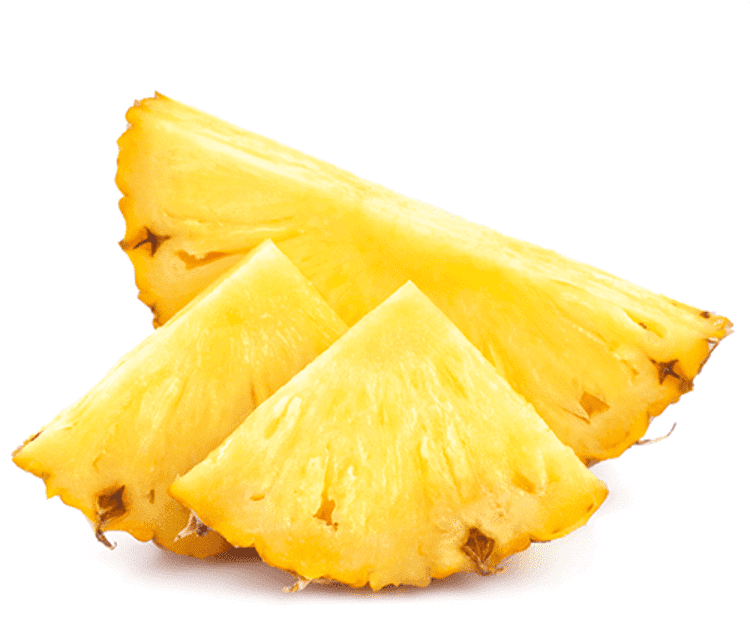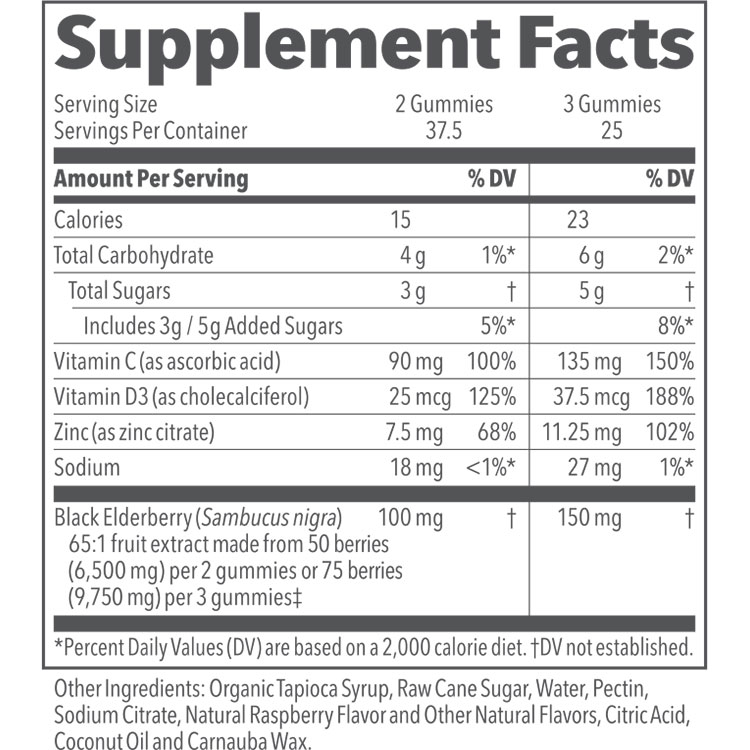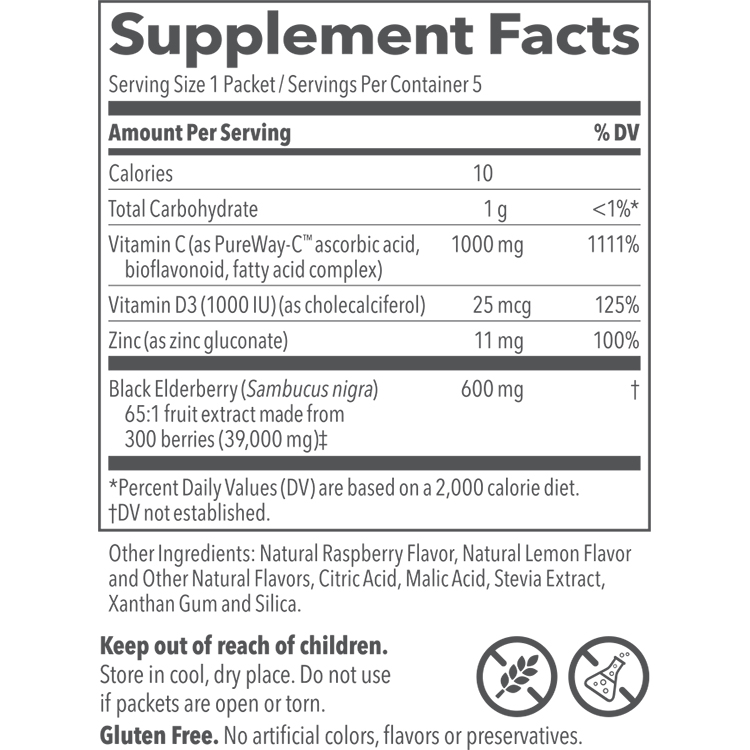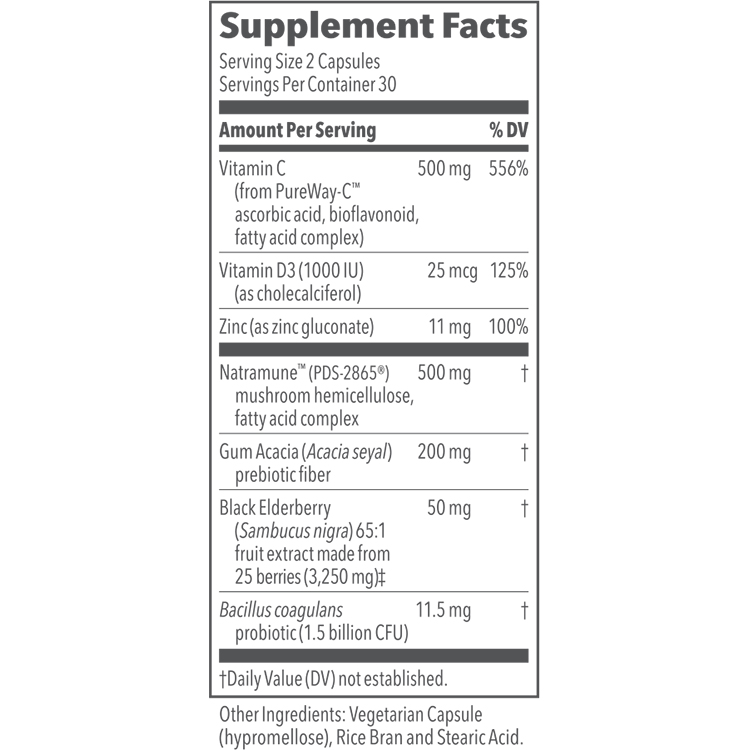BACKGROUND
Ingredient Type: Constituent (enzyme)
Also Known As: Pineapple enzyme, Pineapple extract, Plant protease concentrate

Bromelain is considered an enzyme extract that is derived from the pineapple (Ananas cosmosus). Although most of the bromelain can be found in the stem, it is prevalent throughout the fruit. Bromelain is a combination of several proteolytic enzymes with notable therapeutic properties. The remainder of the fruit is composed of other materials such as various minerals, colored pigments, protease inhibitors, organic acids, and organic solvents (5,6). These bromelain enzymes are also known as fruit bromelain and stem bromelain (2).
The therapeutic value of bromelain is due to its biochemical and pharmacological properties, which explain some of its current uses: swelling, pain reduction, inflammation of the nasal or oral cavity, as well as various other body parts following injury or surgery. Bromelain has also been reported to be possibly useful for hay fever, debridement, pulmonary edema, rheumatoid arthritis, pityriasis lichenoides chroinca, muscle tension, tendinopathy, knee pain, poor clotting, cancer prevention, urinary tract infections as well as various gastrointestinal conditions such as ulcerative colitis (1).
TRADITIONAL USES
According to records, pineapple has been a major part of traditional folk medicine since ancient times. Although it was said to have been introduced to Christopher Columbus in the late 1400s, it was only recognized for its beneficial properties during the sixteenth and seventeenth centuries when it was introduced to the Asian Pacific. Once there, it was later promoted as the first commercial crop (4). The bromelain constituent was first isolated from the pineapple fruit in 1891, followed by its introduction as a therapeutic supplement in 1957.
Pineapple’s long history of traditional use originates from both Central and South America. The natives readily applied the pineapple dressings to wounds and skin injuries to reduce the associated inflammation in the affected area. The pineapple was also often made into a juice to be administered orally to help soothe stomach aches and other gastrointestinal related concerns. In Germany, bromelain has found its home in aiding inflammation and swelling associated with athletic injury or surgery, as well as in patients with asthma or acute sinusitis (3).
WHAT DOES SCIENCE TELL US?
Bromelain Might Help Support the Digestive System:
A review was conducted to assess the various forms of enzyme supplementation and its clinical effectiveness in ameliorating digestive, as well as absorption disorders. It was noted that enzyme supplementation plays an integral role in the management of such disorders, especially in regards to exocrine pancreatic insufficiency. Historically, it is noted that bovine porcine pancreatic enzymes have been utilized and preferred for exocrine pancreatic insufficiency. Recently, however, other forms of enzymes are proving to be effective in various conditions such as microbe-derived lipase, as well as plant-derived enzymes such as bromelain, which is a natural derivative of pineapple; serving in support of protein digestion. According to the reviewed studies, there is a mutually beneficial effect when combing animal-based and plant or microbe-derived enzymes on digestion (9).
Another study aimed to assess potential alternative therapies for functional dyspepsia. The utilized alternative treatment consisted of a dietary integrator composed of sodium alginate, sodium bicarbonate, bromelain, and an essential oil blend. Fifty-three clinically diagnosed patients with functional dyspepsia were categorized into four subgroups based on the predominant symptom (ulcer-like, motility-like, reflux-like, and nonspecific dyspepsia). According to the results, 68% of the patients revealed improvement in the measured markers of effectiveness following three months of treatment (0.8 g PO BID). It was concluded from the study that short term treatment could significantly improve dyspeptic symptoms in dyspepsia patients negative for H. pylori (10).
A study investigated the effects of bromelain on intestinal motility. In this study, contractility in vitro was evaluated through stimulation in the isolated mouse ileum through acetylcholine, barium chloride, or electrical stimulation. According to the results, bromelain was noted to have inhibited contractions previously induced by varying spasmodic compounds in the mouse ileum with similar potency across the board. Upon assessment of the data, researchers concluded that the administration of bromelain inhibits intestinal motility, which was further proposed as a potential alternative component for the normalization of intestinal motility in those with inflammatory disease or diabetes (11).
This last study was conducted to investigate the effects of bromelain in vivo in the treatment of colonic inflammation in the IL-10-deficient murine model of inflammatory bowel disease. According to the study, upon daily treatment with oral administration, beginning at age five weeks, was noted to have decreased the incidence and severity of spontaneous colitis in the mice subjects. Additionally, bromelain was noted to have significantly decreased the clinical and histologic severity of colonic inflammation when administered to piroxicam-exposed mice with the current presence of colitis. Proteolytically active bromelain was required for anti-inflammatory effects in vivo. Regarding dosages up to 1000 mg/kg/day for 18-weeks, the presence of adverse effects such as dermatitis, hair loss, and weight loss was rare (12).
Bromelain Might Help Decrease Inflammation:
An epidemiological study aimed to assess the safety and efficacy of an oral-enzymatic combination (OE) in the treatment of rheumatic diseases. The composition of this oral-enzymatic treatment, Phlogenzym, included: trypsin, bromelain, and rutin. In this study, it was compared with the efficacy and safety of non-steroidal anti-inflammatory drugs. A total of 2,139 patients were treated with either OE or an NSAID. These treatment groups were assigned based on their pre-existing condition; joint diseases, spinal disease, or rheumatic soft tissue disease. According to the study, two-thirds of OE patients received the recommended dose of 6 tablets/day for 23-35 days. Respectively those taking an NSAID were administered the recommended dosage for 16-25 days. According to the results, there was a 50% higher success rate in the total treated with OE than for NSAIDS at comparable initial and treatment situations. According to the treating physicians, the OE was well tolerated, exhibiting fewer adverse events when compared to the NSAID treatment (13).
In an open case observational study, the efficacy and tolerability of high-dose Bromelain POS were assessed on patients with blunt injuries to the musculoskeletal system. Fifty-nine of the patients in this study were treated by usual therapeutic measures by their orthopedic surgeon, along with the bromelain preparation. The treatment length varied depending on the nature and degree of injury of the lesion, anywhere from one week to three weeks. The measured criteria for comparison were swelling, pain at rest and during movement as well as tenderness. A baseline was assessed on the day of the injury, as well as five subsequent dates. Based on the assessed data, it was observed that the bromelain treatment resulted in a significant reduction of all four tested parameters. Additionally, the tolerability of the preparation was very good (14).
The aim of a particular, double-blind, randomized, parallel study was to assess the effectiveness of an oral enzyme-rutosid combination (ERC) when compared with diclofenac on patients with osteoarthritis of the knee. The ERC contained rutosid as well as bromelain and trypsin. A total of 52 patients were treated either with ERC or diclofenac. The measured criteria to assess the effectiveness of each treatment incorporated the Lequesne’s Algofunctional Index, as well as a complaint index, which included: pain at rest, pain in motion, and restricted function. According to the results, both the ERC as well as the diclofenac, were noted as effective, resulting in clear symptomatic improvements. A slight tendency towards the superiority of ERC was noted. It was concluded that ERC could be a safe alternative to NSAIDs in the treatment of painful episodes of osteoarthritis of the knee (15).
The purpose of this study was to assess the effectiveness of protease supplementation in the attenuation damage and inflammation induced by eccentric exercise. Upon a baseline assessment, subjects performed a series of isokinetic extension/flexion exercises. Subjects were randomly assigned to either consume 5.83 g daily of either a cellulose placebo or the proteolytic test supplement containing fungal proteases, bromelain, and papain. Following the treatment period, subjects performed a 45-min downhill treadmill protocol at 60% of V02max. Additionally, four blood draws were performed as well as three muscle function tests within the next 48 hours. The results noted a significant difference in strength in the protease group. “Elevations in circulating eosinophils and basophils were observed, coinciding with lower levels of cyclooxygenase 2, interleukin six and interleukin 12”. Upon analysis of the results, it was concluded that protease supplementation seems to attenuate muscle strength loss following eccentric exercise (16).
Another study also investigated the effects of protease supplementation on muscle soreness and contractile performance following downhill running. Ten matched pairs of male subjects participated in this study. Participants either consumed two protease tablets (325 mg pancreatic enzymes, 75 mg trypsin, 50 mg papain, 50 mg Bromelain, 10 mg amylase, 10 mg lipase, 10 mg lysozyme, 2 mg chymotrypsin) or a placebo four times daily for a total of 4 days during exercise. The assessed markers testing effectiveness were perceived muscle soreness, pressure pain threshold by dolorimetry of the anterior medial, anterior lateral, posterior medial, posterior lateral thigh quadrants as well as knee extension/flexion torque and power. According to results, the experimental group who were administered protease supplementation demonstrated a more superior recovery time of contractile function as well as diminished effects of delayed-onset muscle soreness following downhill running when compared to the placebo group. It was concluded that protease supplementation has the potential to facilitate muscle healing as well as allow for faster restoration of contractile function following intense exercise (17).
Bromelain Might Support Cardiovascular Health:
A study was conducted to assess the effects of bromelain on the cell size distribution of isolated human in vitro platelets. According to the results, the preincubation of platelets with bromelain (10 micrograms/mL) was able to prevent thrombin-induced platelet aggregation completely. Additionally, in vitro, the bromelain (0.1 micrograms/mL) reduced the adhesion of bound, thrombin stimulated, fluorescent-labeled platelets to bovine aorta endothelial cells. In a similar study which assessed the in vivo effects of orally and intravenously applied bromelain on thrombus formation in the rat mesenteric vessels, it was also noted that bromelain, applied orally at 60 mg/kg inhibited thrombus formation in a time-dependent manner. Intravenous application at 30 mg/kg also was noted in reducing thrombus formation in arterioles as well as venules. It was concluded that bromelain has the potential to be utilized as an alternative in the treatment of patients with thrombosis and related diseases (18,19).
A review was conducted to identify the potential of bromelain on risk factors associated with cardiovascular diseases (CVD). Both an electronic as well as a manual search was conducted between November 2009 and March 2010 seeking randomized controlled trials, human studies, animal studies, as well as experimental studies related to bromelain and CVDs. Upon assessment of qualifying papers, the results suggested that bromelain could be used as an alternative for the treatment of acute thrombophlebitis, “as it decreases aggregation of blood platelets, has a cardioprotective effect, ameliorates rejection-induced arterial wall remodeling, prevents thrombin-induced human platelet aggregation as well as reduces thrombus formation.” It was suggested that more research is necessary to further study the applicable effects of bromelain in cardiovascular disease settings as there are no substantive studies carried out in human populations (20).
Bromelain Possibly Supports a Healthy Weight:
According to a study, the protein stem bromelain (SBM) is used as an anti-obesity alternative. It was shown, at a cellular level, that SBM irreversibly inhibits 3T3-1 adipocyte differentiation through the reduction of adipogenic gene expression also while inducing apoptosis and lipolysis in mature adipocytes. Based on the observed data, this report suggests that SBM, together with all-trans retinoic-acid, “may be a potent modulator of obesity” through specific gene expression modulation, resulting in lipolysis and apoptosis in mature adipocytes (21).
SAFETY
The majority of bromelain research has been conducted on animals or in vivo or in vitro, with a limited if any research on human subjects. Bromelain is considered safe if consumed orally in medicinal quantities/in quantities commonly found in food or when topically applied to the skin in appropriate amounts.
At this time, there is no real conclusive safety or toxicity information available for bromelain on the human model. One study, however, was conducted to assess levels of toxicity in the animal model. Following an attempted oral toxicity test in animals, no deaths were noted with dosages up to 10 kg/kg of body weight in rats, mice, and rabbits (7). It is therefore recommended to consume with caution, especially if you are with or think you may be with any medical conditions, please consult your healthcare professional before supplementing with bromelain.
Drug Interactions:
Please consult your healthcare provider you are taking any of the following medications as they may potentially have adverse, exacerbated, or hindered effect on the respective, associated conditions.
Amoxicillin (or any other medications within this family of drugs): It is advised to proceed with caution when combining amoxicillin and bromelain as it may increase the effect of amoxicillin in the body.
Anticoagulants/ Antiplatelet drugs (aspirin, clopidogrel, diclofenac, ibuprofen, naproxen, dalteparin, enoxaparin, heparin, indomethacin, ticlopidine, warfarin, as well as others): It is advised to seek the opinion of your healthcare professional as the combination of bromelain with such drugs as they may interfere with the body’s ability to clot properly; increasing the chances of potential bruising or bleeding.
Antibiotics, more specifically, tetracycline antibiotics (demeclocycline, minocycline, and tetracycline): Similar to amoxicillin, combining some tetracyclines with bromelain may increase the effects on the body of the antibiotics. It is advised to consult your physician before consumption.
Side-Effects:
Generally, when taken in excess, bromelain can cause mild gastrointestinal side effects such as diarrhea or general discomfort. One study assessed the effects when consuming higher dosages (400-80 mg/kg). The noted effects were mild but presented as gastrointestinal discomfort, flatulence, as well as pasty feces (8).
Those with bleeding disorders, taking blood thinners, or those preparing for surgery should consult their healthcare professional before consumption as bromelain may have the ability to slow the blood clotting process, thereby potentially increasing the risk of bleeding.
If you are allergic to pineapple, latex, wheat, celery, papain, carrot, fennel, cypress pollen, or grass pollen, it is advised to proceed with caution when either consuming or applying bromelain as allergic reactions may result. It is recommended to check with your healthcare professional before taking bromelain to be safe.
REFERENCES
- Bromelain. Rx List. https://www.rxlist.com/bromelain/supplements.htm. Accessed 3 October 2019.
- Bromelain. https://pubchem.ncbi.nlm.nih.gov/compound/Bromelain. Accessed on 3 October 2019.
- Rathnavelu V, Alitheen NB, Sohila S, et al. Potential Role of Bromelain in Clinical and Therapeutic Applications. Biomed Rep. 2016;5(3): 283-288.
- Morton J. Fruits of Warm Climates. 1987. Pineapple; pp. 18-28.
- Scopes RK. Protein Purification: Principles and Practice. 2nd. Springer-Verlag; 1982. pp. 41-65.
- Arnon R, Shapira E. Antibodies to papain. A selective fraction according to inhibitory capacity. Biochemistry. 1967;6(2): 3942-3950.
- Moss JN, Frazier CV, Martin GJ. Bromelains. The Pharmacology of the Enzymes. Arch Int Pharmacodyn Ther. 1963;145: 166-189.
- Maurer HR. Bromelain: Biochemistry, Pharmacology and Medicinal Use. Cell Mol Life Sci. 2001; 58(9): 1234-1245. doi: 10.1007/PL00000936.
- Roxas M. The Role of Enzyme Supplementation in Digestive Disorders. Altern Med Rev. 2008;13(4): 307-314.
- Pellicano R, Strona S, Simondi D, et al. Benefit of Dietary Integrators for Treating Functional Dyspepsia: A Prospective Pilot Study. Minerva Gastroenterol Dietol. 2009;55(3): 227-235.
- Borelli F, Capasso R, Severino B, et al. Inhibitory Effects of Bromelain, a Cysteine Protease Derived from Pineapple Stem (Anas comosus), on Intestinal Motility in Mice. Neurogastroenterol Motil. 2011; 23(8): 745-e331.
- Hale LP, Greer PK, Trinh CT, Gottfried MR. Treatment with Oral Bromelain Decreases Colonic Inflammation in the IL-10-Deficient Murine Model of Inflammatory Bowel Disease. Clin Immonol. 2005;116(2): 135-142.
- Whittenborg A, Bock PR, Hanisch J, Saller R, Schneider B. Comparative Epidemiological Study in Patients with Rheumatic Diseases Illustrated in an example of a Treatment with Non-Steroidal Anti-Inflammatory Drugs vs. an Oral Enzyme Combination Preparation. Arzneimittelforschung. 2000;50(8): 728-738.
- Masson M. Bromelain in Blunt Injuries of the Locomotor System. A Study of Observed Applications in General Practice. Fortschr Med. 1995;113(19): 303-306.
- Akhtar NM, Naseer R, Farooqu AZ, Aziz W, Nazir M. Oral Enzyme Combination Versus Diclofenac in the Treatment of Osteoarthritis of the Knee – A Double-Blind Prospective Randomized Study. Clin Rheumatol. 2004;23(5): 410-415.
- Buford TW, Cooke MB, Redd LL, et al. Protease Supplementation Improves Muscle Function After Eccentric Exercise. Med Sci Sports Exerc. 2009;41(10): 1908-1914.
- Miller PC, Bailey SP, Barnes ME, Derr SJ, Hall EE. The Effects of Protease Supplementation on Skeletal Muscle Function and DOMS Following Downhill Running. J Sports Sci. 2004;22(4): 365-372.
- Metzig C, Grabowska E, Eckert K, Maurer HR. Bromelain Proteases Reduce Human Platelet Aggregation In Vitro, Adhesion to Bovine Endothelial Cells and Thrombus Formation in Rat Vessels In Vivo. In Vivo. 1999;13(1): 7-12.
- Heinicke RM, van der Wal L, Yokoyama M. Effect of Bromelain (Ananase) on Human Platelet Aggregation. Experientia. 1972;28(7): 844-845.
- Ley CM, Tsiami A, Ni Q, Robinson N. A Review of the Use of Bromelain in Cardiovascular Diseases. Zhong Xi Yi Jie He Xue Bao. 2011;9(7): 707-710. doi: 10.3736/jcim20110702.
- Dave S, Kaur NJ, Nanduri R, Dkhar HK, Kumar A, Gupta P. Inhibition of Adipogenesis and Induction of Apoptosis and Lipolysis by Stem Bromelain in 3T3-L1 Adipocytes. PLoS One. 2012;7(1): e30831.




